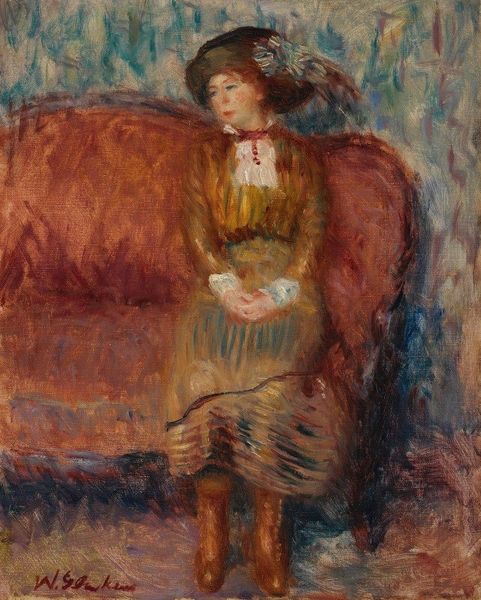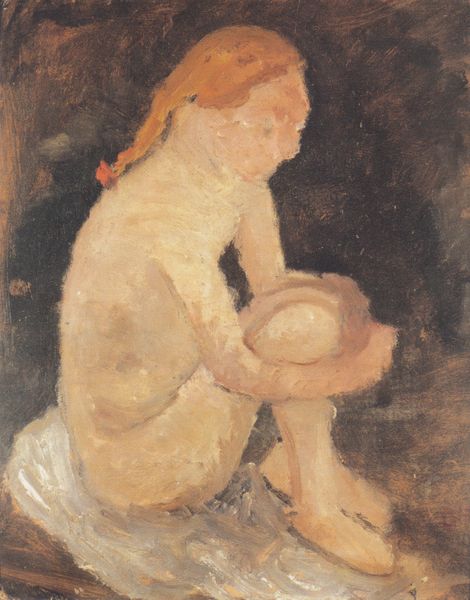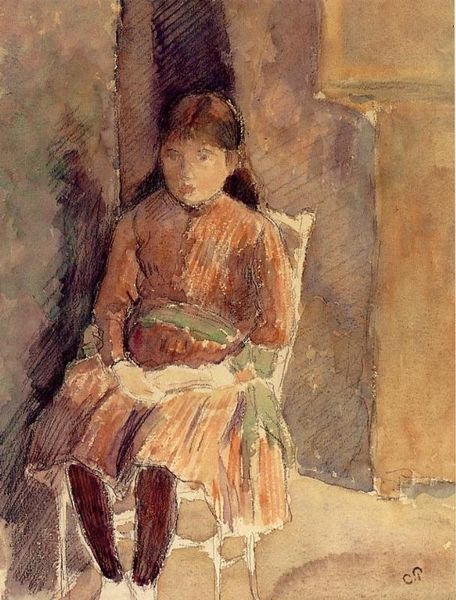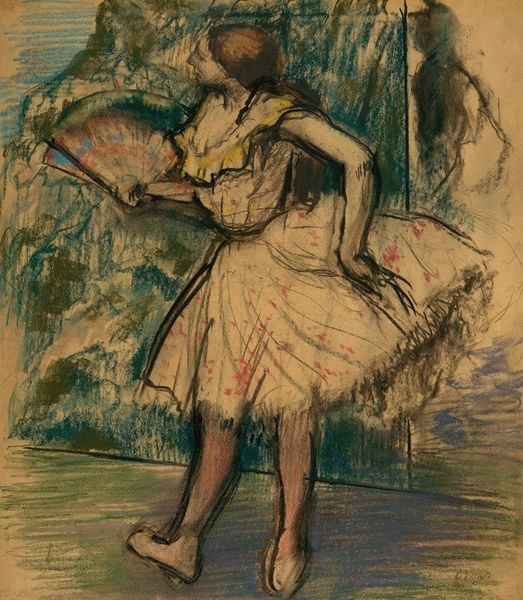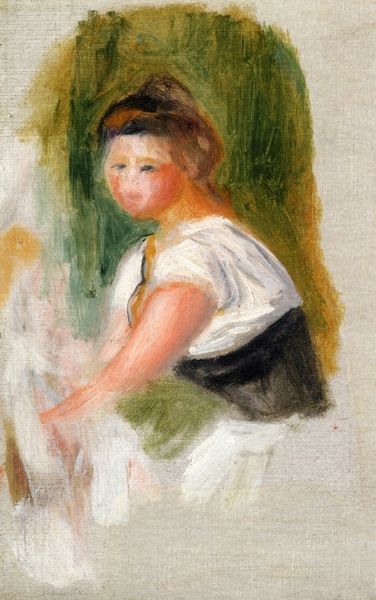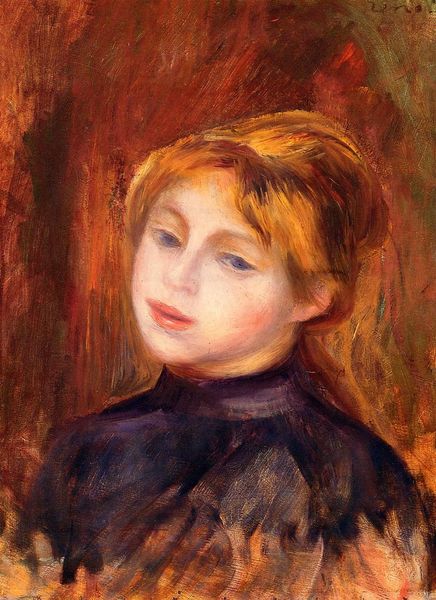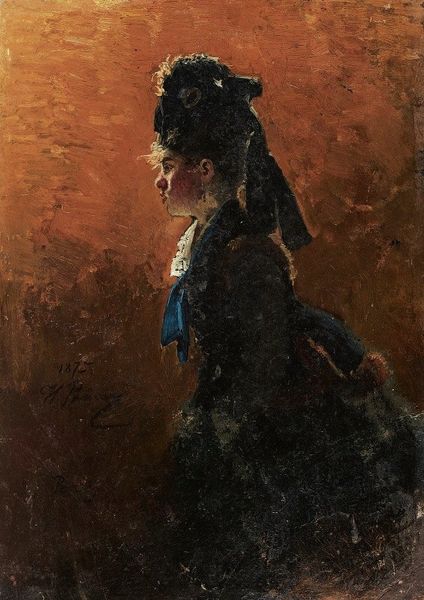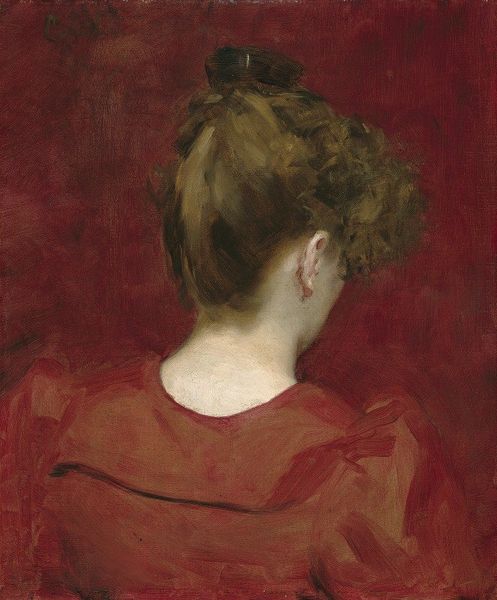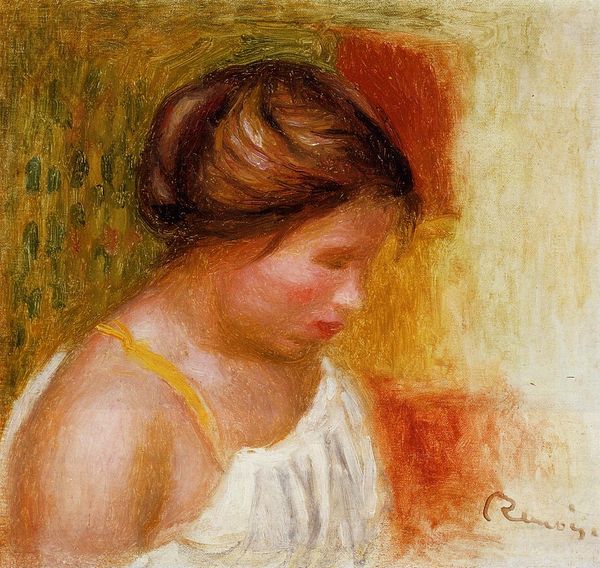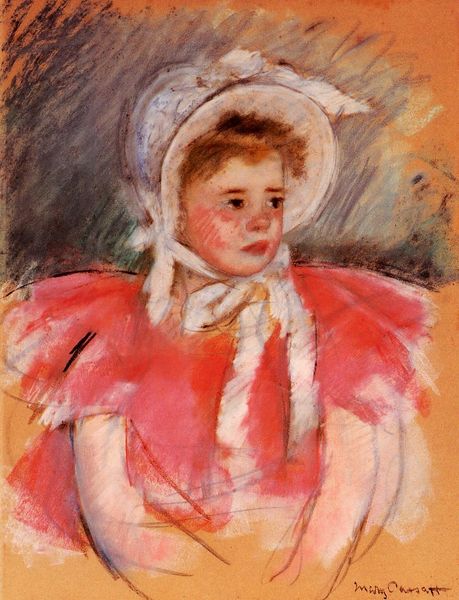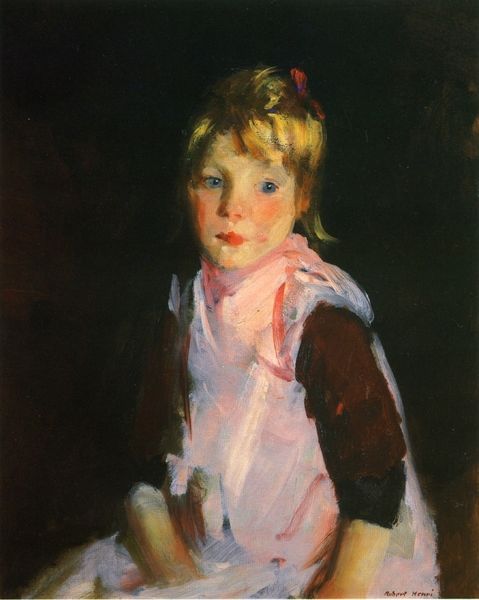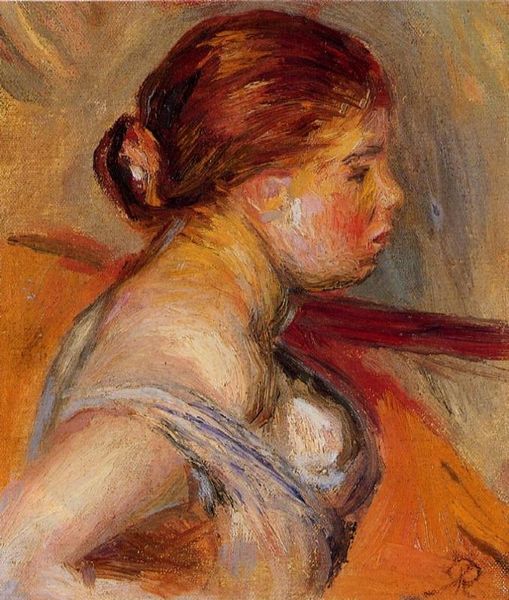
painting, oil-paint
#
figurative
#
painting
#
impressionism
#
oil-paint
#
figuration
#
oil painting
#
genre-painting
#
portrait art
#
watercolor
Copyright: Public Domain: Artvee
Curator: Here we have Edgar Degas' oil on canvas painting, "Ballet Dancer With Arms Crossed," circa 1872. What are your initial impressions? Editor: Well, I'm immediately drawn to that vibrant, almost fiery red background. It creates a striking contrast with the dancer's more muted tones and posture—it gives her an aura of quiet defiance. Curator: Indeed. Note how the diagonal brushstrokes in the backdrop enhance a sense of tension. Degas has applied the paint in layers, creating texture and depth. The composition is a study in contrasts – smooth skin against rough texture, and a subdued palette playing against the bright red plane. Editor: The red may allude to passion or performance anxiety, a visual metaphor for the high-stakes world of ballet. And then there is that demure floral ornament in her hair, offering the counterpoint. It’s almost like a shield; an outward facing representation of controlled fragility. Curator: Precisely! Her arms crossed tightly convey a sense of guardedness, a formal choice that mirrors the artist’s detachment. The form contains and constrains. Look how the neck choker creates a barrier between body and head: thought and action. It echoes in a broader sense the dynamic of power within that microcosm of stage, body, and self. Editor: The dancer's turned gaze speaks volumes. She’s caught in a moment of introspection, maybe anticipating her cue, perhaps dealing with the grueling nature of her vocation. And the severe classicalism of her hairdo contributes to that sentiment. A poignant representation of ambition mixed with vulnerability. Curator: Degas eschews idealization; the dancer isn’t depicted as an ethereal being but rather as a worker, her physicality present yet stylized. The entire design conveys a calculated artificiality; there is, from what is available to the naked eye, no natural element available other than what is implied with the subject's anatomy. Editor: Considering the prevalence of ballet imagery throughout cultural history – as icons of aspiration, beauty, even control – it feels like Degas is intentionally grounding us. He presents the performer as a figure with burdens and aspirations, and not simply a projection of aesthetic ideals. It humanizes. Curator: Ultimately, what strikes me about this early Degas work is how he is less concerned with superficial beauty, and instead interrogates underlying structures through carefully considered visual language. Editor: I find that it really highlights the duality of human endeavor.
Comments
No comments
Be the first to comment and join the conversation on the ultimate creative platform.
